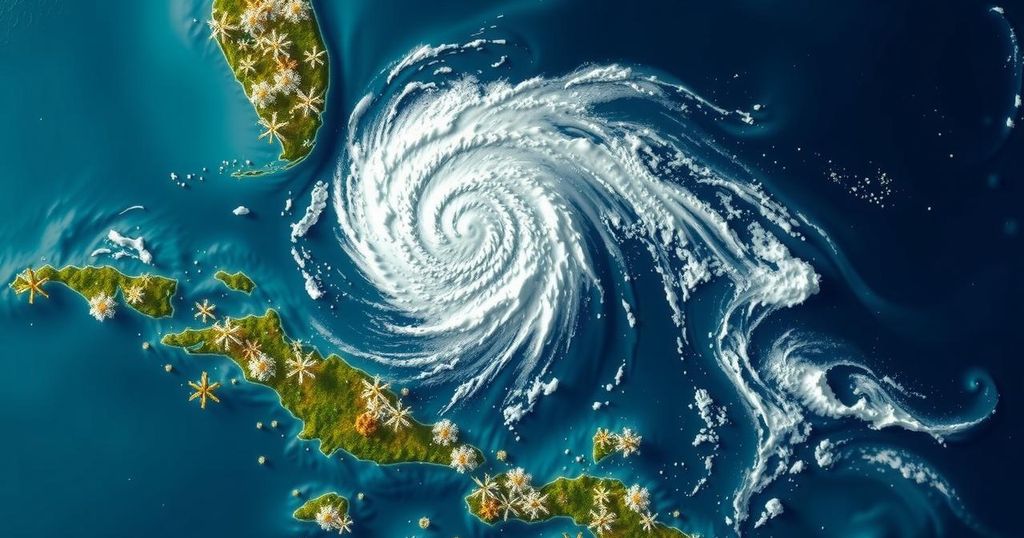Tropical Storm Oscar disintegrated while heading towards the Bahamas after making landfall in Cuba as a Category 1 hurricane, resulting in six fatalities. The storm was noted for its small size and unexpected intensification. Its remnants are anticipated to bring rainfall to the Bahamas and Turks and Caicos Islands. The Atlantic hurricane season continues to be particularly active this year.
Tropical Storm Oscar disintegrated on Tuesday as it approached the Bahamas, following its earlier impact as a Category 1 hurricane in Cuba, where it tragically resulted in the deaths of at least six individuals. The storm, which was remarkable for being one of the smallest recorded hurricanes with a wind field of only six miles, made landfall first in Grand Inagua Island in the Bahamas on Saturday and subsequently in eastern Cuba late Sunday before veering back towards the Bahamas. As of Tuesday afternoon, Oscar’s remnants were located approximately 75 miles east-southeast of Long Island in the Bahamas, with maximum sustained winds diminishing to 35 mph while moving northeast at 12 mph. Forecasters anticipated that the remnants would deliver up to four inches of rainfall across the southeastern Bahamas and the Turks and Caicos Islands, raising concerns of flooding and potential landslides in Cuba, particularly after the storm deposited over 15 inches of rain in certain areas. The National Hurricane Center in Miami provided updates on the storm’s trajectory, noting that it had caught meteorologists by surprise, as no forecasting models had predicted its strengthening into a hurricane. Michael Lowry, a hurricane specialist, remarked upon the unforeseen nature of this event, highlighting the unusual failure of forecasting models to anticipate Oscar’s rapid intensification. Additionally, Cuba was grappling with the aftermath of a significant power outage that had already sparked protests, prompting warnings from the government against public unrest. Oscar was the 15th named storm and the 10th hurricane of the current Atlantic hurricane season, which is characterized by unusually warm ocean temperatures that have led to forecasts of an above-average season with up to 25 named storms expected to develop before the conclusion of November. In the Pacific, Tropical Storm Kristy was also noted to be on the verge of becoming a hurricane as it continued to move across open waters.
The Atlantic hurricane season runs from June 1 to November 30 and is characterized by variable storm activity influenced by ocean temperature and atmospheric conditions. The 2023 season has seen significant activity, with storms like Oscar marking it as one of notable concern due to warming sea surfaces. Tropical Storm Oscar’s unexpected intensification into a hurricane serves as a critical reminder of the complexities involved in forecasting such weather events. The implications of these storms often extend beyond mere meteorological data, leading to severe humanitarian concerns, especially in vulnerable regions like Cuba, which is concurrently facing infrastructural challenges, including power outages and civil unrest.
In conclusion, Tropical Storm Oscar’s rapid transformation from a tropical storm to a hurricane underscores the unpredictability of meteorological phenomena and the limitations of forecasting. The storm’s impact on Cuba not only resulted in fatalities but also exacerbated existing issues related to a major power outage. The incident highlights the ongoing challenges faced by the region during the active hurricane season, which may still see future developments. Authorities continue to prepare for potential new storms as indicated by long-range weather models.
Original Source: www.ivpressonline.com






